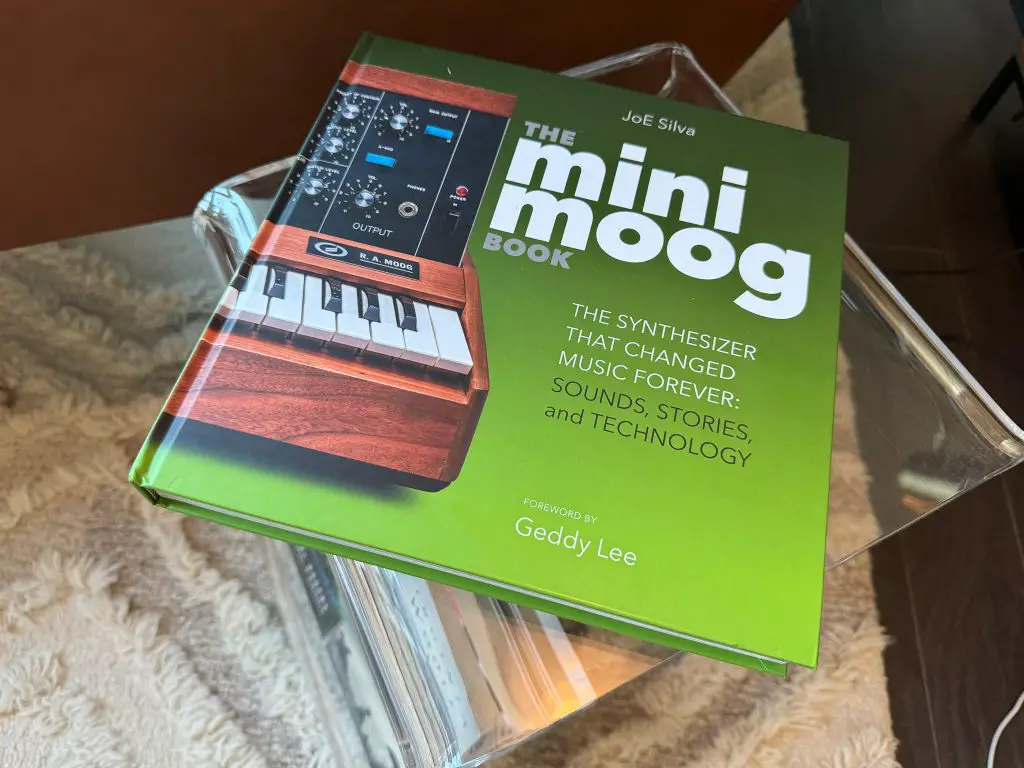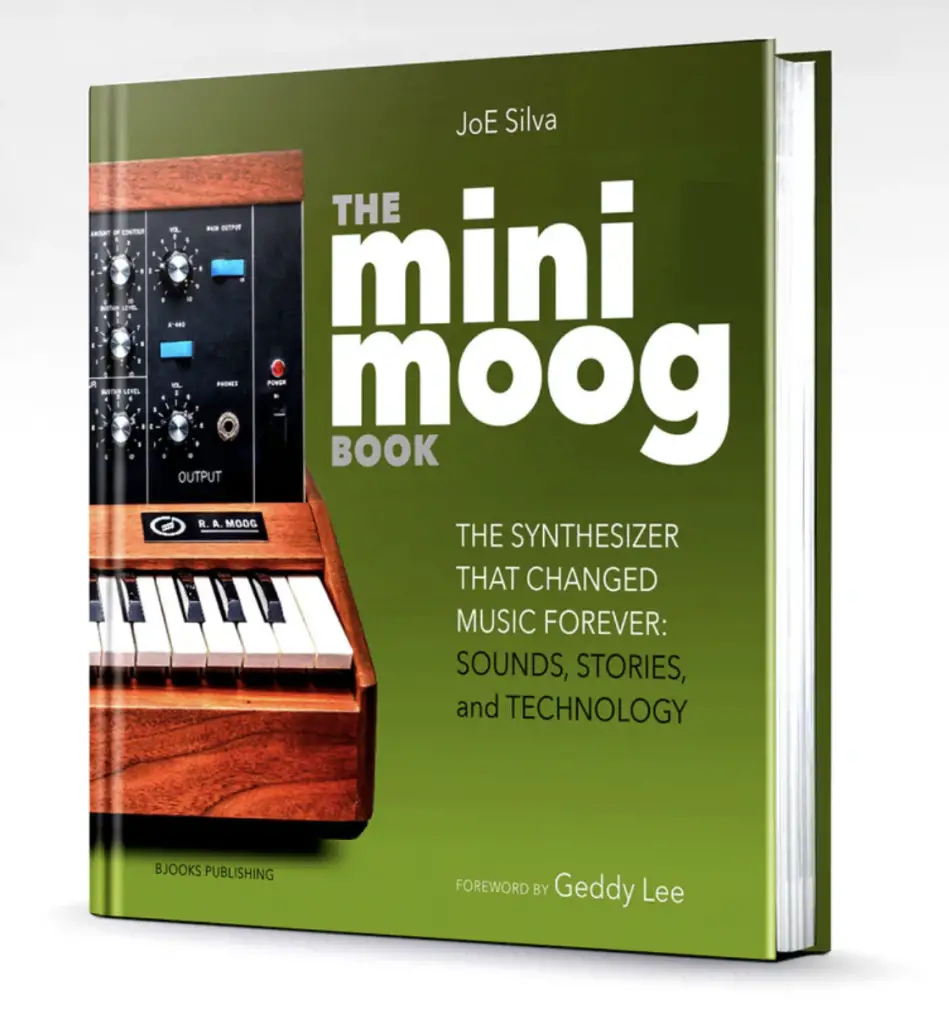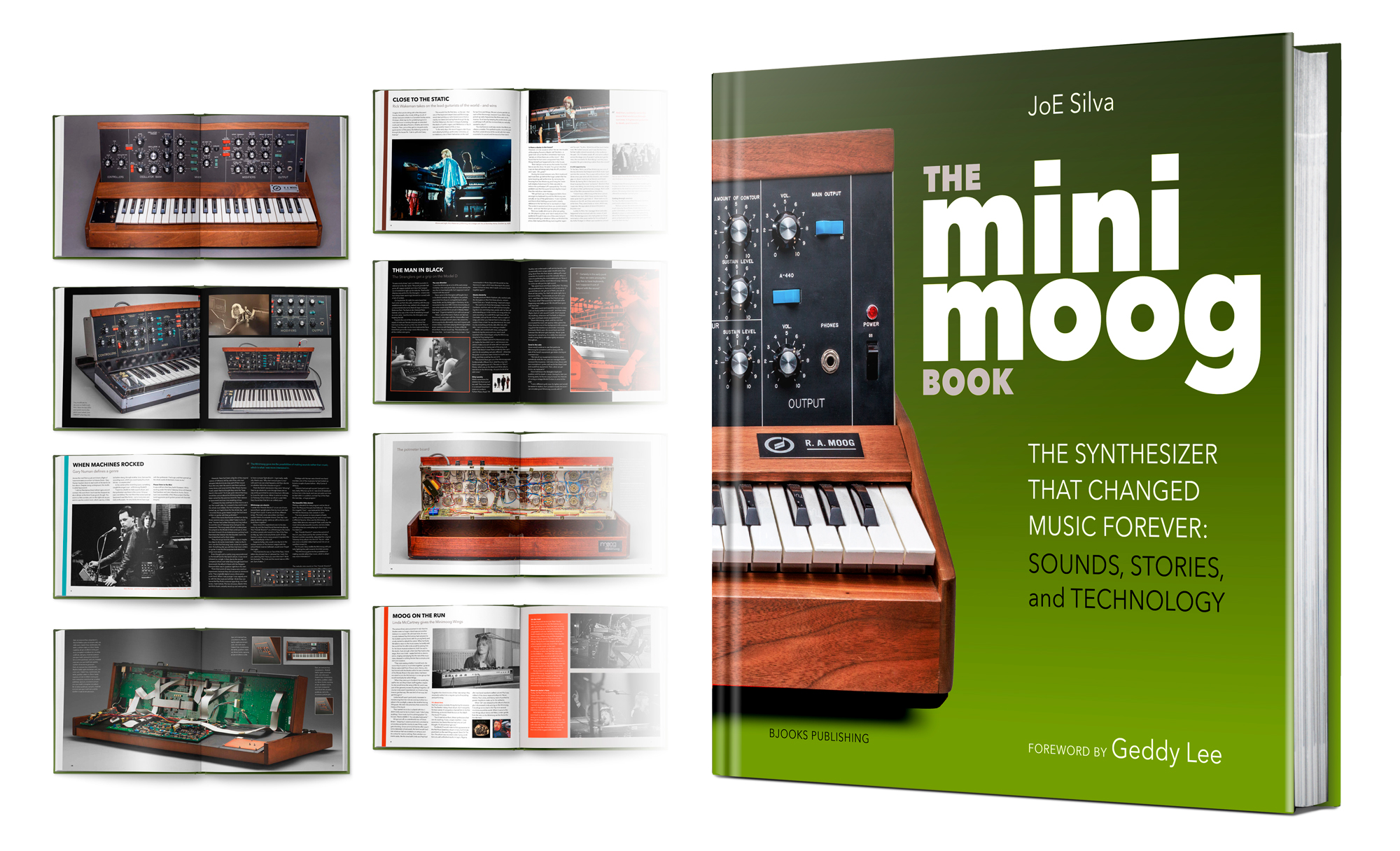Table of Contents
BJOOKS once again delivers another fantastically nerdy book about the Minimoog and the stories behind it all.
JoE Silva’s latest work, The Minimoog Book – The Synthesizer That Changed Music Forever: Sounds, Stories, and Technology, is what you might call the ultimate Moog coffee table book that you actually want to read—a historical love letter to one of the most iconic and influential instruments in modern music history. Published by BJOOKS, this meticulously researched and beautifully designed book dives deep into the legacy of the Minimoog. This synthesizer has left an indelible mark on genres ranging from progressive rock to electronic dance music.
The Minimoog was more than just a piece of musical equipment; it was a revolutionary tool that redefined the boundaries of sound creation and performance. Launched in 1970, the Minimoog became the first widely available portable synthesizer, and its impact rippled through music scenes across the globe. The Minimoog’s unique ability to create fat, warm, and otherworldly sounds propelled it to the forefront of sonic experimentation.
There were no limits, rules, or preconceived notions for this machine, and it was adopted quickly by artists spanning every genre imaginable. From Kraftwerk to Stevie Wonder, Pink Floyd to Herbie Hancock, musicians truly dug the sound of the Minimoog, using it to forge new musical landscapes. Silva’s book tells this story with historical depth and an affection for the technology and creativity behind the instrument.
Pick it up here

A Deep Dive into Technology and Craftsmanship
One of the most fascinating elements of The Minimoog Book is its comprehensive exploration of the technology behind the Minimoog. Silva dedicates a significant portion of the book to unpacking the technical details that made the Minimoog such a groundbreaking instrument.
Readers can dive into in-depth explanations of its oscillators, filters, and amplifiers, making it accessible for those with a technical background in sound engineering but also engaging for those without one.
The Minimoog’s architecture is deceptively simple, yet its sonic possibilities are vast. Silva explains how Moog’s team, led by Robert Moog, designed an instrument that balanced user-friendliness with cutting-edge sound synthesis. Through clear diagrams and illustrations, the book explains how the signal path works, how different waveforms are generated, and how the iconic ladder filter shapes the Minimoog’s characteristic timbre. These technical sections are supplemented with historical anecdotes about how these components came together, offering readers a deeper appreciation for the ingenuity that went into creating the Minimoog.
A Story of Innovation

What truly sets The Minimoog Book apart is the way it weaves technical content with stories of innovation and experimentation. Silva takes readers on a journey through the 1960s, when Robert Moog and a team of engineers were experimenting with modular synthesizers, leading to the creation of the Minimoog. We get a behind-the-scenes glimpse into the developmental process, including Moog’s decision to simplify his earlier, complex modular systems into a more user-friendly, self-contained instrument.
Interviews and firsthand accounts from the musicians, engineers, and producers on the front lines of this sonic revolution enrich this storytelling. Silva interviewed several artists and studio technicians whose careers were transformed by the instrument. These personal reflections give the book a human touch, bringing to life the Minimoog’s impact on music and culture. Whether it’s tales from Rick Wakeman of Yes, or Wendy Carlos, whose Switched-On Bach helped catapult Moog into the public consciousness, these stories provide an intimate connection between the instrument and the people who brought it to life.
Summary – This is the ultimate MOOG nerd coffee table book!
Beyond its narrative, The Minimoog Book is pure Moog porn, with amazing images that will delight fans. True to BJOOKS’ reputation for producing high-quality, visually stunning books about musical instruments, this volume is packed with archival photographs, original advertisements, technical schematics, and more. The book also includes high-resolution images of vintage Minimoogs, as well as gear used by famous musicians.
The book’s attention to detail will satisfy even the most hardcore Moog heads, with sections that delve into rare prototypes and special editions of the Minimoog. These details will delight gearheads and synthesizer aficionados alike, but even casual readers will appreciate the beauty of the instrument as an object of design.
Ever since I was a little kid, I have been obsessed with media. It sounds strange, I know. When I was just 9-years-old, I created a newspaper and offered my mother the job of editor, which she happily accepted. Distribution was small but that didn’t deter me—I had the Citizen Kane virus. And then at age 23, I started another publication called BPM CULTURE Magazine (eventually dropping the word "Culture"), which evolved into a media company called Overamerica Media Group. I found myself in the media business because I love sharing information—telling great stories, sharing ideas and most importantly, informing people about great music! Like most ‘creative types,’ I dabbled in just about everything—from DJing, to producing, and even to creating a record label. And my list of other interests (hobbies) goes on and on; I will leave that for my autobiography. After Overamerica, I spent some time on the client side in fashion, then consulting for various start-ups, only to lead me back to where I started—a start-up media company. It all happened over dinner one night, a friend said why don’t you start up another magazine about EDM—Magnetic was born.








